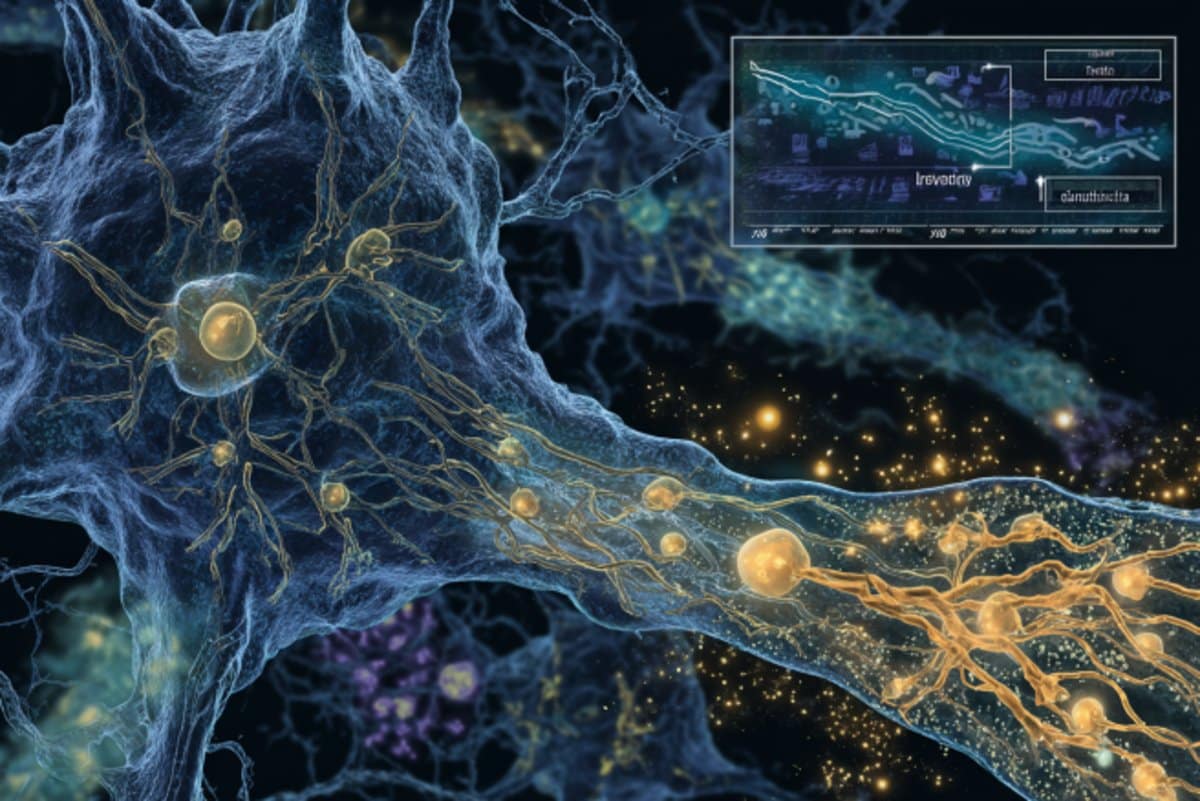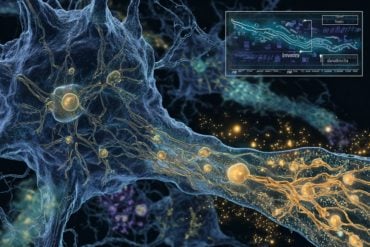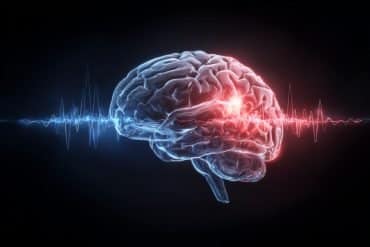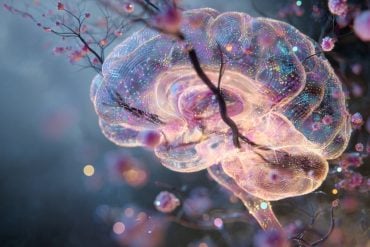Key Questions Answered
Q: What did scientists discover about astrocytes and information encoding?
A: The study found that astrocytes regulate ambient GABA levels using a protein called Gat3, which is essential for helping neurons coordinate their activity and encode visual information as a group.
Q: What happened when Gat3 was removed from astrocytes?
A: When Gat3 was knocked out in the visual cortex of mice, individual neurons still responded to stimuli, but their ensemble coordination weakened, making it harder for the brain to represent visual input efficiently.
Q: Why does this matter for brain disorders?
A: Disruption in Gat3 levels has been linked to seizures, repetitive behaviors, and motor problems—this study provides a mechanistic explanation by showing how astrocytes affect group-level neural processing.
Summary: Astrocytes, long overshadowed by neurons, are proving vital to how the brain processes information. A new study shows that astrocytes use a protein called Gat3 to manage ambient GABA levels, helping neurons work together to encode visual input.
When researchers knocked out Gat3 in the visual cortex of mice, individual neurons still functioned, but their ability to act as a team fell apart, disrupting collective processing. This coordination breakdown could help explain neurological symptoms in conditions linked to altered Gat3 expression.
Key Facts:
- Gat3 Function: Astrocytes use Gat3 to regulate ambient GABA and maintain neural balance.
- Disrupted Coordination: Without Gat3, neural ensembles lose synchronization, impairing information encoding.
- Clinical Relevance: Changes in Gat3 are linked to seizures, repetitive behaviors, and motor dysfunction.
Source: Picower Institute at MIT
Cells called astrocytes are about as abundant in the brain as neurons, but scientists have spent much less time figuring out how they contribute to brain functions.
A novel study by MIT researchers at The Picower Institute for Learning and Memory shows that one function appears to be maintaining the chemical conditions necessary for groups of neurons to team up to encode information.

Specifically, the neuroscientists showed that when they knocked out the ability of astrocytes in the visual cortex of mice to produce a protein called “GABA transporter 3 (Gat3),” neurons there became less able as a group to represent information about the movies lab mice were seeing.
GABA is a common inhibitory neurotransmitter that sharpens neural activity and astrocytes uniquely use Gat3 to regulate the ambient level of GABA in their area.
In the study in eLife, knocking out Gat3 in the visual cortex left neurons stewing in a soup of excess GABA that only produced subtle effects on individual neurons, but nevertheless added up to a significant impairment on their efforts as an ensemble responsible for visual function.
“Even if the changes at the level of a single neuron representing a visual stimulus do not change significantly, if a hundred neurons have some small changes, that could add up at the population level to a measurable, significant change,” said senior author Mriganka Sur, Paul and Lilah Newton Professor in The Picower Institute and MIT’s Department of Brain and Cognitive Sciences (BCS).
Notably, the authors wrote in eLife, this is the first study in live mice of Gat3 at scales spanning individual cells and functional ensembles of hundreds of them.
To make the discovery, BCS graduate student Jiho Park used a novel implementation of CRISPR/Cas9 gene editing to knock out Gat3 combined with statistical and computational analyses of neural activity at the population level, Sur said.
Gat out
As neuroscientists have studied the brain’s visual system over many decades, neurons have claimed most of their attention because they are electrically active and more easily targeted genetically, Sur said. Technology for tracking astrocyte activity and for manipulating their function hasn’t developed as quickly.
But in 2019, the National Institutes of Health gave Sur a grant to develop better tools for studying astrocytes. That funding helped the lab create the variant of CRISPR/Cas9 they call MRCUTS that enabled the new study. The tool allowed them to use just one viral vector to target the gene that encodes Gat3 for multiple cuts. That multiplexed attack decisively and precisely knocked it out in visual cortex astrocytes.
Once Park knocked out Gat3, she could see the effects of its absence by visually tracking the calcium activity of neurons, a proxy for their electrical activity. The consequences were more subtle than the team expected.
Awash in GABA, neurons fired less robustly and less reliably. When the mice were watching only a gray screen, instead of movies, the neurons would spontaneously activate less often, too.
But to the researchers’ surprise, when Gat3 was gone the neurons individually still did their jobs. Cells that in the presence of Gat3 were responsive to different features of the images the mice were seeing, such as the orientation of lines, remained responsive even after Gat3 was knocked out.
Though ambient levels of GABA were higher, pairs of neurons still shared GABA through their direct connections, or “synapses,” as before, meaning their direct dialogue with each other didn’t change.
“We were expecting to see changes in orientation tuning among other things, but we didn’t see that,” Park said. “That’s why we looked into deeper levels of analysis to see if there’s any difference.”
Disrupted teamwork
That deeper analysis occurred at the level of broader neural ensembles, where Park used several statistical and computational methods to analyze how the collective information encoding by hundreds of neurons changed when Gat3 was knocked out.
Using a statistical method called a “Generalized Linear Model” to analyze patterns of activity across the ensemble, Park discovered that when Gat3 was knocked out, the activity of neurons became less predictive of the activity of others in the group compared to when Gat3 was present.
This indicated that while individual neurons might still be doing what they were supposed to, their coordination was impaired.
Meanwhile using a “Support Vector Machine”-based decoder to discern the information that ensembles were representing, she found that when Gat3 was present the decoder could improve its assessment as more neurons were added to its sample.
But when Gat3 was knocked out, the decoder could no longer ascertain the represented information even as its sample size increased.
“The decoding deficits following Gat3 ablation provide evidence that astrocytic regulation of ambient GABA is essential for organizing the coordinated neuronal activity patterns necessary for efficient information encoding in visual cortical networks,” the authors wrote in eLife.
Clinical cases
The finding that a lack of Gat3 disrupts neural coordination at the population level might help explain clinical observations that Gat3 reduction in the thalamus increases seizure risk, Gat3 increase in the striatum contribute to repetitive behaviors, and Gat3 reduction in the globus pallidus impairs motor coordination, Park said.
“Because our study is the first to look at Gat3 effects on a population level, it might help tie that back to some of the behavioral phenotypes people have been seeing,” Park said.
But more research is needed, Sur noted, because there are other Gat proteins, such as Gat1, that the brain might use to compensate.
In addition to Park and Sur, the paper’s other authors are Grayson Sipe, Xin Tang, Prachi Ojha, Giselle Fernandes, Yi Ning Leow, Caroline Zhang, Yuma Osako, Arundhati Natesan, Gabrielle Drummond and Rudolf Jaenisch.
Funding: The National Institutes of Health, a MURI Grant, The Simons Foundation Autism Research Initiative, the Freedom Together Foundation and The Picower Institute for Learning and Memory provided funding for the study.
About this astrocytes and neurotransmission research news
Author: David Orenstein
Source: Picower Institute at MIT
Contact: David Orenstein – Picower Institute at MIT
Image: The image is credited to Neuroscience News
Original Research: Open access.
“Astrocytic modulation of population encoding in mouse visual cortex via GABA transporter 3 revealed by multiplexed CRISPR/Cas9 gene editing” by Mriganka Sur et al. eLife
Abstract
Astrocytic modulation of population encoding in mouse visual cortex via GABA transporter 3 revealed by multiplexed CRISPR/Cas9 gene editing
Astrocytes, which are increasingly recognized as pivotal constituents of brain circuits governing a wide range of functions, express GABA transporter 3 (Gat3), an astrocyte-specific GABA transporter responsible for maintenance of extra-synaptic GABA levels.
Here, we examined the functional role of Gat3 in astrocyte-mediated modulation of neuronal activity and information encoding.
First, we developed a multiplexed CRISPR construct applicable for effective genetic ablation of Gat3 in the visual cortex of adult mice.
Using in vivo two-photon calcium imaging of visual cortex neurons in Gat3 knockout mice, we observed changes in spontaneous and visually driven single neuronal response properties such as response magnitudes and trial-to-trial variability.
Gat3 knockout exerted a pronounced influence on population-level neuronal activity, altering the response dynamics of neuronal populations and impairing their ability to accurately represent stimulus information.
These findings demonstrate that Gat3 in astrocytes profoundly shapes the sensory information encoding capacity of neurons and networks within the visual cortex.






